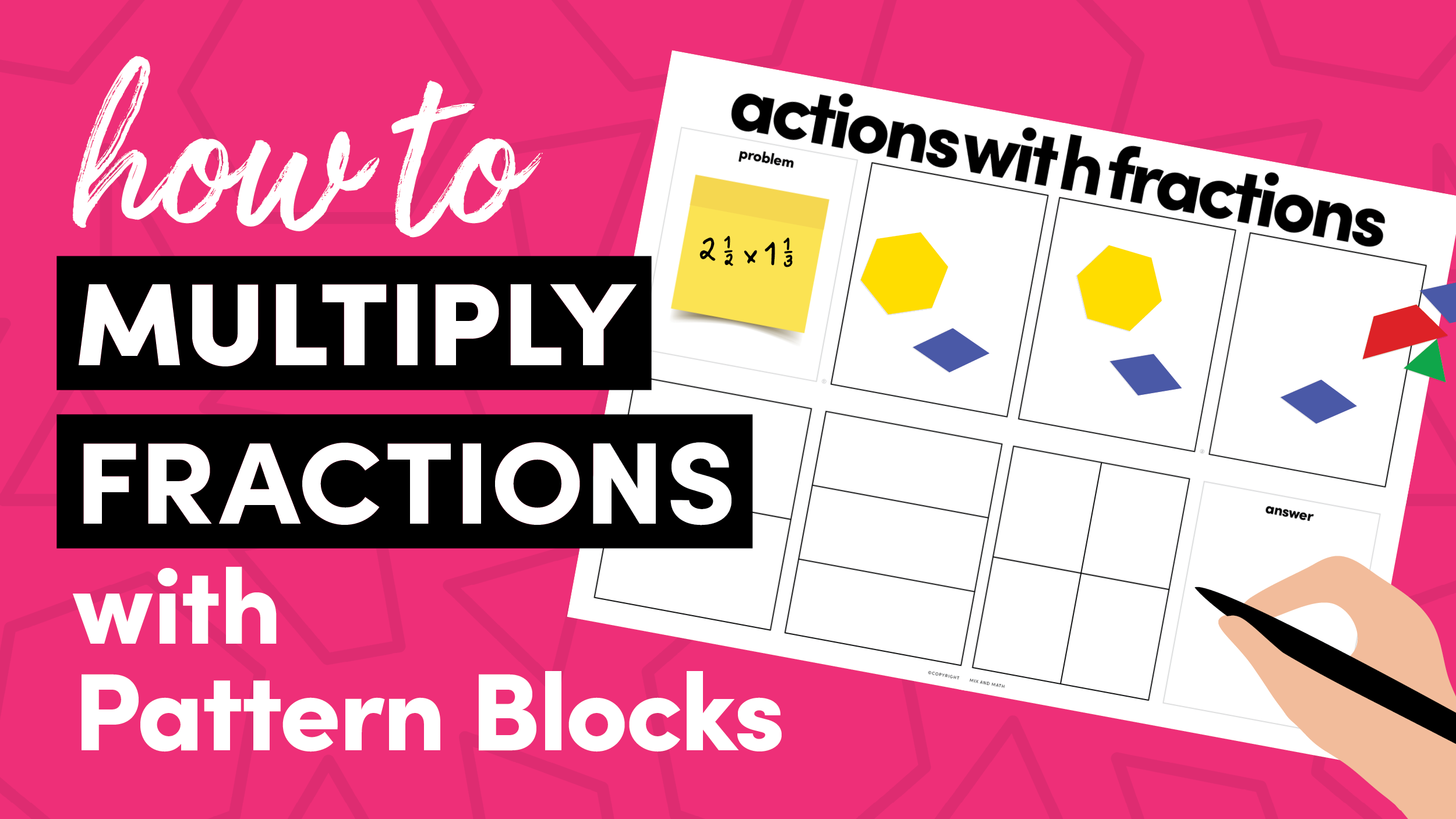5 Tips to Teach Fractions in 4th & 5th Grade
Teaching fractions in 4th and 5th grade often feels scary, especially if your own experience learning fractions in school left you confused and frustrated. But it doesn’t have to be that way for your students! You can turn fractions into a concept you love to teach and your students love to learn about. Here are my top five tips to make fractions more approachable, engaging, and meaningful in your 4th- and 5th-grade classroom.
How to Teach Multiplying Fractions with Pattern Blocks
Multiplying fractions is difficult to make hands-on. Many teachers simply don’t know how to use manipulatives to teach fraction multiplication in 4th and 5th grade! Using pattern blocks is a simple way to make it hands-on and make sure students develop conceptual understanding of fraction multiplication.
3 Ways to Inspire a Love of Fractions
I know several teachers that dread any unit having to do with fractions too. I think a lot of the negative feelings about fractions comes from a lack of learning fractions the way we should have learned fractions. Most of us weren’t taught fractions in a way that made sense or had any type of meaning. Some of our students were introduced to fractions in this same type of way as well.
Play Dough Fraction Project
One of my favorite things to do in the classroom is to actually make things with my students. I absolutely love throwing on my apron and getting my hands and the rest of the classroom dirty!
Rethinking How We Teach Operations with Fractions and Decimals
There are certain concepts in math that are pretty obvious in which order they should be taught. Clearly students should learn to add before they learn to multiply, or divide whole numbers before learning to divide decimals. What I found is not so clear among many teachers and those district leaders who write our pacing guides is what comes first?
Taking Math Beyond the Classroom with Real World Fraction Projects
When students understand when they would actually use the content they are learning, their motivation is immediately boosted. Not only do students become more motivated in learning the content, but they are also challenged to apply (Bloom's Taxonomy, anyone?) the content which typically requires more critical thinking.






